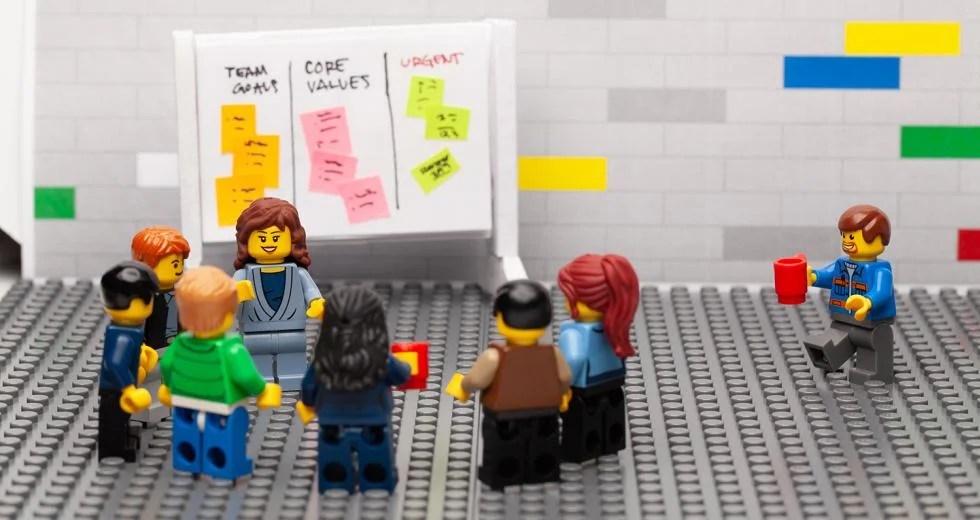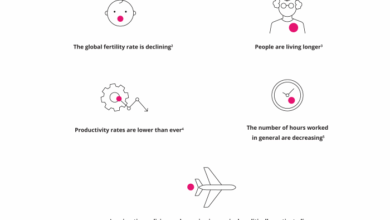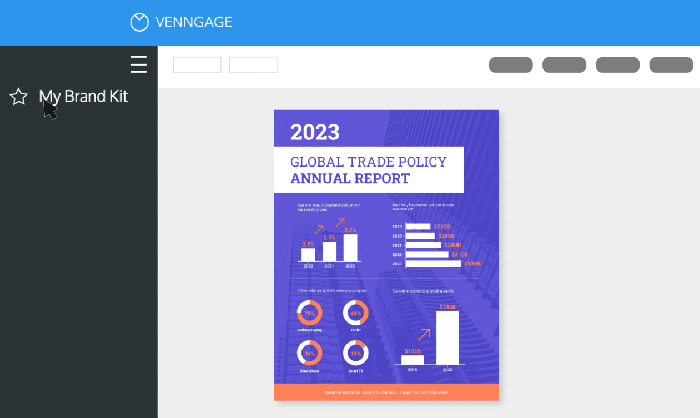
One on one meeting goals – One-on-one meeting goals are crucial for individual and team success. This guide dives deep into defining, achieving, and measuring progress towards those goals. We’ll explore various types of goals, practical strategies, and tools to maximize the impact of these vital meetings.
From identifying areas for performance improvement to fostering career development, one-on-one meetings are a powerful platform for growth. This comprehensive guide offers actionable insights and examples to help you craft effective goals and achieve tangible results.
Defining Meeting Goals
One-on-one meetings are crucial for fostering productivity, addressing concerns, and nurturing professional relationships. Effective meetings are not just conversations; they’re structured interactions designed to achieve specific outcomes. Defining clear goals for these meetings is paramount to ensuring their effectiveness and maximizing the value derived from the time invested.One-on-one meeting goals are specific objectives that participants collaboratively agree upon before the meeting.
These objectives guide the conversation, keeping it focused and productive. Establishing these goals is essential because they provide a framework for the meeting, ensuring that both parties are on the same page and that the discussion stays aligned with pre-determined objectives. Without clear goals, meetings can easily become aimless, leading to wasted time and missed opportunities.
Purpose and Importance of Goals
The primary purpose of setting specific goals for one-on-one meetings is to improve efficiency and effectiveness. By defining objectives beforehand, participants can better prepare, prioritize key discussion points, and ensure that the meeting stays on track. This focus on outcomes helps to maximize the value of the meeting time for both individuals. Goals also provide a measurable way to assess the success of the meeting, and to track progress towards shared objectives.
Characteristics of Effective Goals
Effective one-on-one meeting goals share several key characteristics. They are specific, measurable, achievable, relevant, and time-bound (SMART). A goal like “discuss project progress” is vague and lacks the necessary detail for effective action. Contrast this with “discuss project progress on the marketing campaign and identify potential roadblocks by next week.” This latter goal is specific, measurable, achievable, relevant, and time-bound.
One-on-one meetings are crucial for setting clear goals and fostering productivity. Focusing on actionable items and specific outcomes is key. This week, I’ve been exploring how a new technology, could winpho7 be a contender in the tech space, and how it might impact productivity. Ultimately, successful one-on-one meetings should always lead to tangible results and improved team performance.
A clear understanding of these characteristics ensures that goals are meaningful and actionable.
One-on-one meetings are crucial for setting clear goals and fostering productive work environments. Understanding the nuances of Google’s algorithm dance, like the article on Google’s algorithm dance—no fancy footwork for quality publishers highlights, reminds us that consistent, high-quality content is key. Ultimately, effective one-on-one meetings are about aligning individual efforts with overall company objectives.
Framework for Outlining Actionable Goals
A structured approach to outlining actionable one-on-one meeting goals is essential. A well-defined framework can assist in creating goals that are concrete and deliver tangible results. Below is a suggested framework for outlining actionable goals:
- Objective: Clearly state the overall purpose of the meeting. For example, “Review progress on Q3 sales targets.” This provides context for the entire meeting.
- Discussion Points: List the key areas to be addressed during the meeting. For example, “Review individual sales figures, identify obstacles, and brainstorm solutions.” This helps to structure the conversation.
- Desired Outcomes: Specify the desired results from the meeting. For example, “Establish a plan for overcoming obstacles and set specific action items to improve sales performance by the end of the week.” This defines the tangible achievements expected from the meeting.
- Timeline: Establish a timeframe for the meeting and action items. For example, “The meeting will take place on Thursday at 10 am, and action items must be completed by Friday.” This keeps the meeting focused and ensures accountability.
This framework helps to ensure that one-on-one meetings are productive and achieve specific outcomes. Using this framework ensures a collaborative and structured approach, ensuring that every meeting contributes to the desired outcomes.
Types of Meeting Goals

One-on-one meetings are crucial for professional growth and performance. Effective meetings require clearly defined goals, which guide the discussion and ensure productive outcomes. These goals should be tailored to the specific needs and objectives of both the employee and the manager. Understanding the different types of meeting goals allows for more focused and targeted discussions.
Categorizing One-on-One Meeting Goals
Different types of goals cater to various aspects of professional development. These categories provide a framework for organizing meeting agendas and achieving specific objectives. They help in ensuring a comprehensive approach to professional development, from immediate performance improvements to long-term career advancement.
Performance Improvement Goals
These goals are focused on enhancing current performance and addressing areas needing improvement. They aim to boost productivity, efficiency, and overall work quality. Specific objectives within this category include identifying areas for improvement, establishing action plans, and setting measurable targets. Regular check-ins and performance reviews are essential components of this type of goal. For instance, if a team member consistently misses deadlines, the meeting could focus on identifying the root cause (e.g., lack of clarity on project requirements) and creating a plan to improve time management skills.
Career Development Goals
These goals are centered around long-term professional growth. They encompass identifying career aspirations, exploring potential opportunities, and developing necessary skills for advancement. Specific objectives include discussing career interests, identifying skill gaps, exploring relevant training opportunities, and outlining a career path. These discussions are crucial for ensuring employees are equipped to pursue their long-term aspirations within the company.
For example, a discussion on a career path might involve researching industry trends and exploring internal roles that align with the employee’s aspirations.
Feedback Goals
Feedback goals focus on providing and receiving constructive criticism. They facilitate open communication, address performance issues, and promote continuous improvement. Specific objectives include providing regular feedback on performance, identifying areas for improvement, and addressing concerns in a collaborative manner. This type of goal helps foster a culture of continuous learning and development. For example, a meeting focused on feedback might involve discussing specific examples of successful and less successful projects to identify patterns and areas for improvement.
Goal Outcomes Table
| Goal Category | Specific Objective | Expected Outcome |
|---|---|---|
| Performance Improvement | Identify areas for improvement and develop an action plan. | Increased productivity and efficiency, improved task completion rates. |
| Career Development | Explore potential career paths, identify skill gaps, and research training opportunities. | Enhanced skillset, clearer career trajectory, increased motivation and engagement. |
| Feedback Goals | Provide and receive constructive feedback on performance, identify areas for improvement, and address concerns. | Improved performance, stronger working relationships, and increased employee engagement. |
Setting Effective Goals

One-on-one meetings are powerful tools for professional growth. Effective goals are crucial for maximizing the value of these interactions. Clearly defined objectives ensure that both the manager and the employee are aligned on expectations and progress. This section delves into the practical application of SMART goals for one-on-one meetings, demonstrating how to collaboratively establish objectives and achieve desired outcomes.
SMART Criteria for Goal Setting, One on one meeting goals
SMART goals are a widely used framework for effective goal setting. This acronym stands for Specific, Measurable, Achievable, Relevant, and Time-bound. Each element plays a vital role in creating a concrete and actionable goal. A well-defined goal provides direction and motivation, enabling focused efforts toward achieving specific outcomes.
Applying SMART Principles to Meeting Goals
This section demonstrates how to translate the SMART principles into practical application for one-on-one meeting goals. This involves ensuring the goal is specific enough to be understood by both parties, measurable to track progress, achievable to maintain motivation, relevant to the overall objectives, and time-bound to provide a clear deadline.
- Specific: Instead of “improve performance,” a specific goal would be “increase sales by 15% in the next quarter by implementing three new strategies.” This specificity provides clear direction and a measurable target.
- Measurable: Quantifiable metrics are essential. “Enhance communication skills” is vague. A measurable goal would be “improve active listening skills by achieving a 90% comprehension rate in feedback sessions by the end of the month.” The measurable aspect ensures progress can be tracked.
- Achievable: Goals should be challenging but realistic. “Reduce customer complaints by 100% in one week” is unrealistic and demotivating. A realistic goal would be “reduce customer complaints by 20% by implementing a new customer service protocol by the end of the quarter.” This approach ensures the goal is within reach.
- Relevant: The goal should align with the overall objectives of the individual and the organization. A goal like “improve social media presence” might not be relevant to a salesperson focused on client acquisition. A relevant goal would be “increase client engagement by 10% through targeted social media interactions.” This focus ensures the goal aligns with the individual’s role and the organization’s priorities.
- Time-bound: Deadlines provide a sense of urgency and structure. “Improve time management” is vague. A time-bound goal would be “reduce project completion time by 15% by implementing a new project management tool by the end of the next project cycle.” This approach creates a concrete timeline for achieving the goal.
Examples of Well-Defined One-on-One Meeting Goals
Examples of well-defined one-on-one meeting goals illustrate the practical application of SMART principles.
- Goal: “Increase project completion rate by 10% within the next three months by implementing a new project management methodology.” (Specific, Measurable, Achievable, Relevant, Time-bound)
- Goal: “Improve customer satisfaction scores by 15% by implementing new customer service protocols and training sessions by the end of the next quarter.” (Specific, Measurable, Achievable, Relevant, Time-bound)
- Goal: “Develop a new marketing strategy for the product line by attending relevant webinars and analyzing competitor analysis within the next two weeks.” (Specific, Measurable, Achievable, Relevant, Time-bound)
Collaborative Goal Setting
Collaborative goal setting is essential for successful one-on-one meetings. This process involves active participation from both the manager and the employee. It ensures that goals are not imposed but rather co-created, fostering a sense of ownership and commitment.
- Active Listening: The manager should actively listen to the employee’s input and concerns. This creates an environment where the employee feels valued and heard, encouraging their full participation.
- Open Dialogue: Encourage an open and honest discussion about the employee’s aspirations and challenges. This exchange of ideas is vital for creating realistic and achievable goals.
- Joint Agreement: After the discussion, both parties should reach a consensus on the goals. This collaborative effort ensures a shared understanding and commitment to the agreed-upon objectives.
Measuring Progress Towards Goals
Tracking progress towards one-on-one meeting goals is crucial for maintaining focus and achieving desired outcomes. A well-defined plan with measurable metrics allows you to assess the effectiveness of your strategies and make necessary adjustments. Regular check-ins and feedback loops provide valuable insights into progress and potential roadblocks.Effective goal tracking empowers individuals to monitor their progress and adapt their approach as needed.
This process involves more than just monitoring numbers; it’s about understanding the context behind the data and using it to refine your strategies. This proactive approach ensures that you’re not just meeting goals but also learning and growing along the way.
Methods for Tracking Progress
Tracking progress involves a multifaceted approach. Employing a combination of methods, such as journaling, digital tools, and regular meetings, can offer a comprehensive view of your journey. This integrated approach ensures that you don’t miss any critical data points.
- Journaling: Maintaining a journal allows for detailed records of tasks completed, challenges encountered, and insights gained. This provides a personal record of your progress and can reveal patterns or trends over time. For example, if you consistently face roadblocks in a specific area, the journal can highlight this issue, prompting a more focused approach to overcome the obstacle.
- Digital Tools: Utilizing project management software or dedicated one-on-one meeting trackers can streamline the process of documenting tasks, deadlines, and progress updates. These tools often provide visual representations of progress, making it easier to spot trends and identify areas requiring attention. Examples include Trello, Asana, or customized spreadsheets.
- Regular Meetings: Schedule regular check-in meetings to review progress, discuss roadblocks, and adjust strategies as needed. This allows for a direct dialogue between you and the individuals involved, enabling real-time adjustments to the approach.
Importance of Regular Check-ins and Feedback
Regular check-ins and feedback are essential components of the goal-tracking process. They facilitate open communication and allow for prompt adjustments to strategies. This continuous dialogue fosters a proactive approach to problem-solving and helps to maintain motivation.Regular check-ins are not just about reviewing progress; they’re about identifying roadblocks and adapting to changing circumstances. Feedback from others can provide fresh perspectives and insights, enabling a more comprehensive understanding of the situation.
Measuring the Effectiveness of the Goal-Setting Process
Evaluating the effectiveness of the goal-setting process requires a holistic approach. Consider not only the achievement of the specific goals but also the overall impact on productivity, efficiency, and team dynamics. This holistic approach ensures a more robust evaluation of the entire process.
- Qualitative Feedback: Collect feedback from individuals involved in the goal-setting process. Open-ended questions can reveal insights into the effectiveness of the process, the challenges faced, and the areas for improvement.
- Quantitative Metrics: Utilize established metrics, like those Artikeld in the table below, to quantify progress and track performance. This data-driven approach provides a clear picture of the effectiveness of the strategies employed.
Key Metrics for Measuring Progress
The table below Artikels key metrics for measuring progress toward one-on-one meeting goals. Consistent tracking of these metrics provides a structured approach to monitoring progress and adapting strategies as needed.
| Metric | Description | Frequency |
|---|---|---|
| Productivity | Output per unit of time | Weekly |
| Efficiency | Time required to complete tasks | Weekly |
| Quality | Accuracy and completeness of deliverables | Weekly |
| Team Collaboration | Level of cooperation and support | Monthly |
Addressing Challenges and Roadblocks: One On One Meeting Goals
One-on-one meetings, while crucial for productivity and growth, can encounter unexpected hurdles. Understanding potential challenges and developing strategies to overcome them is vital for achieving meeting goals. This section delves into identifying common roadblocks, crafting solutions, and adapting to shifting circumstances.
Potential Challenges in Achieving Goals
Navigating one-on-one meetings effectively involves anticipating potential obstacles. These challenges can stem from various sources, impacting the meeting’s focus and desired outcomes. Common issues include scheduling conflicts, distractions, a lack of preparation on either side, and even communication breakdowns. Furthermore, unforeseen personal issues or external factors can disrupt the flow of the meeting.
Strategies for Overcoming Obstacles
Effective strategies are crucial for navigating obstacles and ensuring the meeting’s success. Proactive planning and clear communication are key components. For example, building in buffer time for unexpected delays can prevent the meeting from derailing. Encouraging active listening and open communication can mitigate misunderstandings and improve the overall interaction.
Adapting Goals Based on Evolving Circumstances
Flexibility is paramount in achieving goals. External factors or internal adjustments may necessitate adjustments to the meeting’s objectives. Recognizing these changes and proactively adapting the goals can prevent frustration and maintain momentum. It’s important to remain adaptable and re-evaluate priorities based on the current situation.
Examples of Successful Strategies for Addressing Roadblocks
Several strategies have proven successful in addressing roadblocks. For example, if a scheduling conflict arises, a flexible approach to finding alternative times is essential. This might involve proposing different meeting slots or utilizing online scheduling tools to identify suitable options. In the event of a lack of preparation, a pre-meeting check-in can ensure both parties are adequately informed and prepared.
One-on-one meetings are crucial for achieving specific goals, fostering better communication, and resolving any roadblocks. However, distractions like a seemingly secure payment method, such as Google Wallet, can be surprisingly vulnerable to pickpocketing, as highlighted in this article about Google Wallet a pushover for pickpockets. Ultimately, focusing on the meeting objectives, and proactively managing potential risks, is key to successful one-on-one meetings.
If external factors impact the meeting’s focus, clearly defining the key discussion points and prioritizing them can help to refocus the conversation.
One-on-One Meeting Goal Examples
One-on-one meetings are crucial for fostering professional growth and maintaining a healthy work dynamic. Effective goals within these meetings ensure focused discussions, actionable steps, and measurable progress. This section provides practical examples of one-on-one meeting goals across various industries and roles, illustrating the impact of achieving these goals.
Sales Representative Goals
One-on-one meetings for sales representatives should focus on increasing sales performance and improving client relationships. Successful representatives are often encouraged to achieve specific sales targets within a defined timeframe.
- Goal: Achieve a 15% increase in quarterly sales figures. Expected Outcome: Increased revenue, boosted commission, and a demonstrably stronger sales performance, leading to recognition and potential promotions.
- Goal: Develop and implement a new sales strategy to target a specific customer segment. Expected Outcome: Increased market share in a chosen sector, and possibly, new client acquisition, contributing to a greater share of the target market.
- Goal: Improve client retention by 10%. Expected Outcome: Stronger client relationships, reduced churn rate, and increased customer lifetime value. This positive feedback loop often generates more referrals and testimonials, which can boost the team’s overall sales performance.
Project Manager Goals
Project managers benefit from one-on-one meetings to stay on track and anticipate potential issues. These goals focus on delivering projects successfully and efficiently.
- Goal: Complete the “Phoenix Project” within the agreed budget and timeline. Expected Outcome: On-time and on-budget project delivery, demonstrating strong project management skills and increasing confidence in the team’s abilities to meet deadlines.
- Goal: Identify and mitigate potential risks in the “Orion Project” by the end of the week. Expected Outcome: Reduced project risk and increased project stability. This also allows for proactive solutions to problems, preventing project delays and possible cost overruns.
- Goal: Improve team collaboration and communication within the “Alpha Project” team. Expected Outcome: Streamlined workflows, improved project outcomes, and stronger team cohesion and morale. A harmonious team often results in higher-quality deliverables and a more positive work environment.
Software Engineer Goals
Software engineers use one-on-one meetings to focus on technical skills and professional development. These goals often involve learning new technologies and enhancing existing abilities.
- Goal: Learn and implement the new “Apex” programming language by the end of the month. Expected Outcome: Expanded skillset, ability to work on projects requiring the Apex language, and potential for leadership roles in projects utilizing the language.
- Goal: Refactor existing codebase for improved efficiency and maintainability. Expected Outcome: Optimized code, easier future maintenance, and improved team performance in related projects. This leads to faster debugging and a more robust codebase.
- Goal: Gain proficiency in Agile development methodologies. Expected Outcome: Increased project efficiency, improved teamwork, and reduced project risk through a streamlined development approach. Agile often allows for more flexibility and faster adaptation to changing requirements.
Strategies for Success
One-on-one meetings are crucial for fostering professional growth and achieving individual and team objectives. Effective strategies for these meetings ensure productive conversations, clear action items, and tangible progress. By implementing structured approaches and best practices, individuals and teams can maximize the impact of these valuable interactions.Implementing a structured approach to one-on-one meetings significantly increases their effectiveness. This involves planning, preparation, active listening, and follow-up to ensure the meeting achieves its intended purpose.
A structured framework creates a safe and supportive environment for open communication and mutual understanding.
Best Practices for Setting and Achieving Goals
Effective one-on-one meetings require careful planning and execution. Best practices ensure these meetings are valuable and contribute to progress. These include clear communication, active listening, and setting realistic goals.
- Establish Clear Communication Channels: Use consistent and easily accessible methods for communication, including email threads or shared documents. This avoids confusion and ensures everyone is on the same page regarding meeting outcomes and follow-up actions.
- Prioritize Active Listening: Create an environment where both parties feel comfortable sharing their perspectives and concerns. This involves focused attention and thoughtful responses that demonstrate understanding.
- Set Specific and Measurable Goals: Define clear, specific, and measurable goals for each meeting. These goals should be aligned with overall objectives and contribute to individual and team success. For example, a goal might be “Develop a strategy for increasing lead generation by 15% within the next quarter.”
- Develop a Plan of Action: Artikel specific action items, responsibilities, and deadlines for each agreed-upon goal. This ensures that the discussion translates into tangible results. Example: “Complete the market analysis report by next Friday and share it with the team.”
Step-by-Step Procedure for Implementation
Implementing these strategies involves a systematic approach. A structured process helps ensure that the meeting achieves its intended goals.
- Pre-Meeting Preparation: Review previous meeting notes, identify key issues, and prepare a concise agenda with specific goals and discussion points. Review previous action items and discuss any outstanding issues.
- Facilitating the Meeting: Stick to the agenda, encourage open communication, and actively listen to all perspectives. Summarize key points and action items at the end of the meeting.
- Post-Meeting Follow-up: Send a summary of the meeting, including agreed-upon action items, responsibilities, and deadlines to all participants. This helps maintain clarity and ensures accountability.
- Regular Check-ins: Schedule follow-up meetings or check-ins to monitor progress, address challenges, and make necessary adjustments to the plan. This fosters ongoing collaboration and accountability.
Key Takeaways for Participants
Participants should understand the importance of clear communication, proactive problem-solving, and effective follow-up. These takeaways emphasize the value of collaboration and commitment to achieving shared objectives.
- Proactive Communication: Regular communication is vital for keeping the momentum going and ensuring that all parties are on the same page regarding meeting outcomes and follow-up actions.
- Accountability and Follow-Through: Participants need to understand their individual responsibilities and deadlines to ensure that action items are completed effectively.
- Adaptability and Flexibility: The ability to adapt to changing circumstances and adjust the plan as needed is crucial for achieving long-term goals.
Creating a Structured Framework
Establishing a structured framework for one-on-one meetings creates a consistent and productive environment. A clear format allows for a smooth and focused discussion.
| Meeting Phase | Description |
|---|---|
| Opening (5 minutes) | Review previous meeting minutes, identify key issues, and set the agenda for the current meeting. |
| Discussion (30 minutes) | Discuss progress on action items, address challenges, and identify new goals and action items. |
| Action Planning (10 minutes) | Establish specific, measurable, achievable, relevant, and time-bound (SMART) action items and assign responsibilities. |
| Closing (5 minutes) | Summarize key discussion points, review action items, and schedule the next meeting. |
Tools and Resources
Boosting your one-on-one meeting effectiveness hinges on the right tools and resources. These aids streamline goal setting, tracking progress, and problem-solving, ultimately leading to more productive and impactful conversations. Smart use of these tools can significantly improve the outcomes of your one-on-one meetings.
Digital Planning and Tracking Tools
Utilizing digital tools for one-on-one meeting planning and follow-up offers significant advantages. These platforms enable efficient organization, streamlined communication, and detailed progress tracking, leading to greater accountability and meeting effectiveness. Choosing the right tool depends on individual preferences and the complexity of the goals.
- Project Management Software: Platforms like Asana, Trello, or Monday.com allow for task creation, assigning responsibilities, setting deadlines, and tracking progress. These tools provide a centralized hub for managing individual projects and associated one-on-one meeting goals, making it easier to monitor progress and identify any roadblocks.
- Calendar Apps: Tools like Google Calendar or Outlook Calendar are essential for scheduling and managing one-on-one meeting slots. Integrating meeting notes and follow-up actions directly into the calendar allows for a streamlined workflow and minimizes the risk of missed deadlines or forgotten tasks.
- Note-Taking Apps: Evernote, OneNote, or specialized note-taking apps enable detailed documentation of meeting discussions, decisions, and action items. This detailed record is crucial for referencing past conversations, evaluating progress, and ensuring accountability. These apps also enable easy sharing and collaboration among participants.
Templates and Checklists
Templates and checklists are invaluable resources for standardizing one-on-one meeting processes and ensuring consistent focus on key areas. Using predefined structures promotes efficient communication and helps prevent overlooking important aspects of the meeting.
- One-on-One Meeting Templates: Pre-designed templates offer a framework for covering essential topics during the meeting, like performance reviews, goal setting, and problem-solving. These templates help maintain structure and prevent the meeting from veering off-topic.
- Action Item Checklists: These checklists help ensure that all agreed-upon actions are documented, assigned, and tracked. They serve as a valuable reminder of commitments and aid in monitoring the progress of individual goals.
- Goal-Setting Worksheets: These worksheets provide a structured approach to defining specific, measurable, achievable, relevant, and time-bound (SMART) goals. This ensures clarity and focus, leading to more productive one-on-one meetings.
Recommended Resources
- Articles: Numerous articles and blog posts offer insights into effective one-on-one meeting strategies and best practices. A quick search on platforms like LinkedIn or industry-specific blogs can yield relevant information.
- Templates: Many online platforms and resources offer downloadable templates for one-on-one meetings, goal setting, and action item tracking. These templates provide a starting point for creating personalized structures.
- Software: Exploring software options like Asana, Trello, or Monday.com can streamline the entire process, from goal setting to tracking progress and managing tasks.
Epilogue
In conclusion, setting and achieving one-on-one meeting goals is a dynamic process requiring careful planning, open communication, and continuous evaluation. By understanding the different types of goals, applying SMART principles, and tracking progress, you can maximize the value of these interactions. Remember, consistent effort and adaptability are key to navigating any challenges that may arise. This guide provided a framework to achieve lasting results in your one-on-one meetings.






